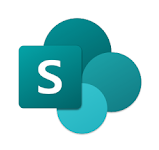Research Drive
From May 2020, we will no longer be providing researchers with a Research Drive but advising users to set up a SharePoint space for their new research projects.
Furthermore, we are looking to migrate any research data currently stored on Box into SharePoint, with a view to ending our Box subscription.

The University provides researchers with access to SharePoint in order to safely and securely store their current research data. SharePoint is part of Office 365 so all staff have access to SharePoint via the University portal > Office 365 > SharePoint.
See the 'Sharepoint sites for research' page for more about using Sharepoint. (First login to the University Portal to access the link)
How to access Sharepoint
SharePoint is part of Office365 and can be accessed via the University Portal > Office365 > SharePoint.
SharePoint can be accessed from off campus as it is web based. There are two apps that will allow you to access and even edit your files on your mobile device. These are 'SharePoint' and also the newer 'Office' app which shows you all of your files in Office. Both are available from the appropriate App Store.
Create a new Sharepoint site for a research project
New SharePoint sites for data storage, can be created yourself directly in SharePoint. But please read our instructions first: create a site for research data.
Request migration of content from Box to Sharepoint
We are keen to migrate research data from Box. If you want to request a migration, we will arrange to do that for you. Please use the following form to get the ball rolling.
Security of SharePoint
The data will be stored on the University of Stirling's instance of Sharepoint or Teams. They are both Tier D-compliant. This includes the following standards: ISO 27001, ISO 27018, SSAE16 SOC 1 and SOC 2, HIPAA, and EU Model Clauses (EUMC). This is a cloud storage solution in O365: Sharepoint and Teams enforce team-wide and organization-wide two-factor authentication, single sign-on through Active Directory, and encryption of data in transit and at rest. Files are stored in SharePoint and are backed by SharePoint encryption. If a team member accidentally deletes data it can be retrieved by the Team owner and or the IT administrator
Research Drive
From May 2020, we will no longer be providing researchers with a Research Drive but advising users to set up a SharePoint space for their new research projects.
The University provides storage where researchers can keep their data relating to their current research This is your "Research Drive" or X files . This is available to all Research Postgraduates and all Research staff.
Forms are available for several different options, e.g., setting up a shared project folder from within Unidesk Self Service.
The research drive consists of physical data storage, which is automatically mapped on University owned (domain) Windows desktop PCs and laptops to the X: drive. Users of Macs, or non-domain Windows PCs, will have to map their Research Drive to smb://researchfiles/research.
This storage is located on a server called \\researchfiles which has a top level folder called research. It is this top level folder that the X: drive is mapped to for users. X: drive should only be used to store data that is relevant to registered research projects. There are several storage alternatives for all other categories of data.
For each researcher a personal folder is automatically created within \\researchfiles\research
Like the users’ home folders this will be named with their University user ID, e.g., ljh1 and will be accessible only to them. Users cannot see any folders within the X: drive that they are not permitted to access. Therefore the default, when they open the X: drive in Windows Explorer, is that they are in the research folder and can see only one subfolder which is their own, identified by their user ID.
See Access to Research Drive from off campus for information on how to set up the Research Drive so you can use it at home or in the field.
